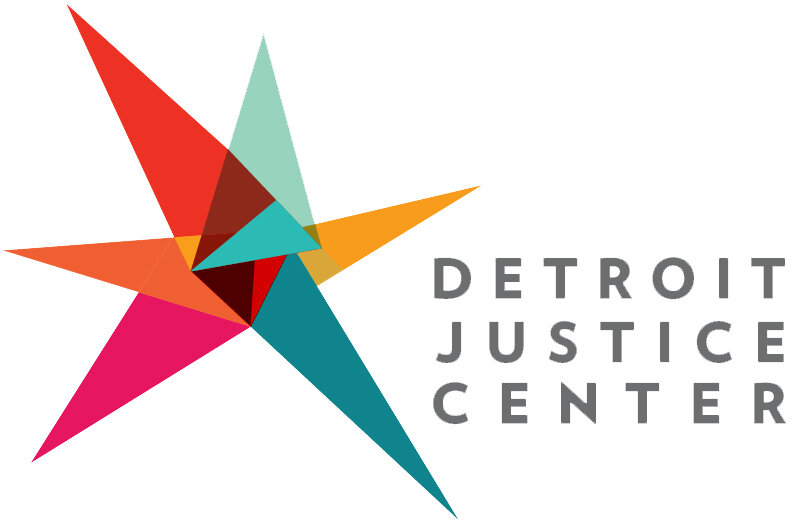ShotSpotter Ordinance Op-Ed By Nancy Parker
ShotSpotter is audio surveillance technology marketing itself as gunshot detection technology. City Council’s approval last fall of the Detroit Police Department’s request to extend and expand ShotSpotter throughout the City stirred up conversations on the critical issue of safety and what it means for Detroiters to keep each other safe. People of all ages shared their pain and trauma in hopes of convincing councilmembers that investing over $8 million in a faulty, ineffective microphone was not the answer to the ever-present problem of gun violence in the city.
While those who made comments at City Council meetings in favor of surveillance technology spoke from a place of desperation about the senseless violence they’ve experienced and a desire to save lives, it was abundantly clear that the majority of supporters were not aware of how the technology actually functions nor the dangers it carries. One virtual commenter even used her precious one minute of time to ask councilmembers the question of what happens after a ShotSpotter alert is triggered; and of course, her inquiry went unanswered. However, if the City had actually complied with the law that it passed just last year–the Community Input Over Government Surveillance (“CIOGS”) Ordinance–people would have had access to the information needed in order to understand the technology and engage in informed discussion about its use.
The CIOGS Ordinance requires that DPD submit a compliant Surveillance Technology Specification Report detailing exactly how ShotSpotter will be used, how its use will potentially impact people’s civil rights/liberties and the safeguards that will be implemented to prevent such infringement, and other detailed inquiries. The Ordinance further requires that the City post the Specification Report on its website at least fourteen days prior to procurement, which means fourteen days prior to any public discussion about acquiring the technology. With this level of transparency and specificity, communities would have been armed with the information needed to understand the dangers of gunshot detection technology. Instead, DPD violated the Ordinance by failing to submit an accurate and complete Specification Report; the City blatantly violated the Ordinance by failing to post the Specification Report to its website fourteen days before the ShotSpotter discussions began; and City Council violated the Ordinance by approving the ShotSpotter contracts despite noncompliance with its terms.
Organizers fought hard to pass the CIOGS Ordinance, and the City is simply ignoring this important accountability measure. As a result of this blatant disregard of the law and the will of the people, partners in the Stop ShotSpotter Detroit Coalition filed a lawsuit against the City for its failure to abide by the law. The lawsuit boils down to accountability–we are demanding that the City follow the laws governing Detroit, procedurally and substantively. A Third Circuit Court judge heard arguments from both sides last week and will be deciding whether the City must adhere to the laws that it enacts. The judge’s ruling will have broad implications, and a negative decision could essentially create an authoritarian regime, diminishing the political power of Detroiters.
And while this lawsuit is not about the effectiveness of ShotSpotter, it is important to note that ShotSpotter does not produce the results that some City officials would have you believe. ShotSpotter cannot reliably differentiate gunfire from loud noises such as firecrackers and car backfires, and cannot detect gunshots fired inside a building. In Chicago, the Office of the Inspector General found that 91% of ShotSpotter alerts resulted in no evidence of a gun-related criminal offense; a St. Louis study found that over a ten-year period, ShotSpotter created no reduction in violent crime in the city, but it did increase demand on police resources. How then can an allegedly short staffed DPD respond to the copious amount of false ShotSpotter alerts that will surely occur? With every false positive alert that deploys combat-ready cops with guns drawn on unsuspecting residents, there lives the real threat of being harassed with increased stop and frisk tactics, or being wrongfully detained like Michael Williams, a 65-year-old Black man who spent a year in jail based on erroneous ShotSpotter evidence; or worse yet, being killed like unarmed 13-year-old Adam Toledo in Chicago who police shot after responding to a ShotSpotter alert. The serious adverse impacts that this technology has on people’s civil rights should shock everyone’s conscience.
Deceptively, but unsurprisingly, DPD’s numerous community engagement sessions around ShotSpotter did not include any of the above information–it was in essence a propaganda tour to promote the technology without educating people on the reported negative consequences and its lack of impact on violent crime. And while residents did not have this necessary information to take part in an informed discussion of the utilization of ShotSpotter as required by the Ordinance, our City Councilmembers did. Despite being aware of the real life effects of this costly, ineffective surveillance gadget, City Council still chose to dismiss the evidence and waste taxpayer money on this reactionary tool that will not keep us safe.
The problem of gun violence requires people-led solutions. Detroiters are innovative and, notwithstanding the City Council’s unlawful approval, we possess the radical imagination needed to see a better future for ourselves, with our civil liberties intact. Technology cannot and will not save us, and neither will any elected official. However, it is our duty to demand that those who have been elected by us, do right by us.

